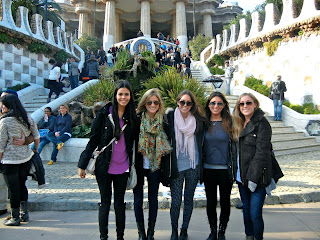The fourth and final field trip that we went on was to the narrow streets of El Raval. This area is located on the other side of the historical neighborhood bordering Las Ramblas. This is an area that I did not know existed until I was brought there by Xavi.
As you walked down the streets, you saw many skateboarders, being that Barcelona is the skateboard capital of the world, this fit.
Prior to this field trip I was really unaware of the large history behind Barcelona city. I was truly amazed with the amount of work that was put into the renovations to the city prior to the 1992 Olympics. Before the Olympics, the area next to the Barcelona port was mainly occupied by drug dealers and people trying to encounter prostitutes.

The southern part of El Raval, near the port also used to be famous and the cities red-light district. However in 1988, the government started a huge regeneration project and invested a lot of money in cleaning up the area, making it also become a lot safer. Approximately 15 years ago, this area that we visited was not the way it is today. Years ago, this area acted as a boarder that ended the city. Any streets existing beyond these streets, were not considered to be a part of the city.
While walking through this neighborhood, you could see that it was flooded with young people. It has so much to offer, and so many activities to do. This neighborhood is vibrant, historic, and full of personality. This has also become fashionable, becoming the home of a lot of galleries, art studios, and trendy book shops, not to mention the imposing, MACBA (museum of modern art) and CCCB which is in the neighboring exhibition centre.

During this field trip, we were also brought to the University of Barcelona. The University of Barcelona is a public university, located inside the city of Barcelona. Students are able to walk into classes without prior knowledge of the profesor. They combine the values of tradition with its position as a university dedicated to innovation and teaching excellence.
While walking through the campus, you could see graffiti on some of the buildings. There were many buildings all of which are located in the same area.

After each field trip that I have been on this semester, I feel as though I have explored Barcelona to a new level. I enjoy learning about the streets and significance of each building. It has really made my experience here a rememberable one. It is interesting to be immersed into a new culture and be educated on the place that us abroad students have been living in for the past four months.






















